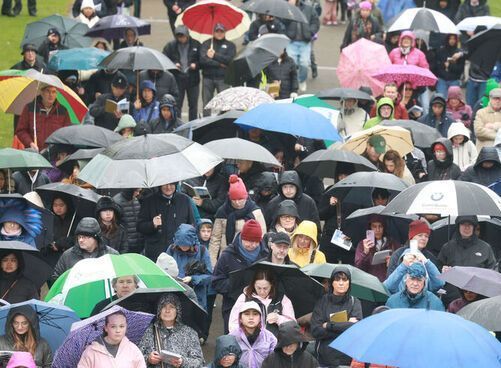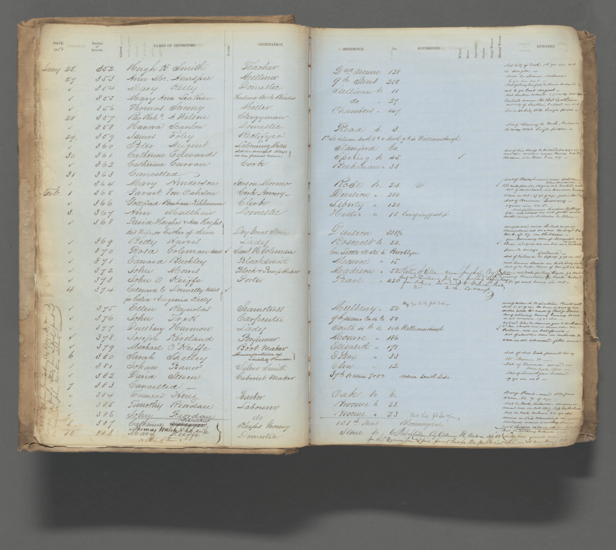The kerfuffle touched off by Teachout prompted Seth Colter Walls to write "Jazz Is Dead. Long Live Jazz" as a rejoinder in the Dec. 21, 2009, issue of Newsweek, a magazine that has sadly slid into irrelevance with its wheezy, wonkish makeover. Even a magazine I respect and still enjoy reading, JazzTimes, weighed in on the controversy by claiming in its February 2010 issue that Teachout had overlooked "the great number of cross-pollination or inter-genre projects, the growth in jazz education, and the remarkable internationalism in the music."
Teachout, whose new biography of Louis Armstrong, "Pops," has been justly commended, ended his article with this exhortation: "Jazz musicians who want to keep their own equally beautiful music alive and well have got to start thinking hard about how to pitch it to young listeners -- not next month, not next week, but right now."
I thought about Teachout's remarks as I watched and listened to the young students of Annmarie Acosta, Patty Furlong, Rose Flanagan, and Margie Mulvihill perform before a standing-room-only crowd at the Jan. 3 benefit concert for John Plunkett and family in the Killeshandra Room of Rory Dolan's restaurant-pub in Yonkers, N.Y.
Can Irish traditional music be saved? Anyone there would probably have laughed at the question, given the abundance of talent on stage and on the dance floor before an applauding throng. It's true that in general the audience attending live Irish music has fallen noticeably during this deep, damaging recession. Yet the tutelage from Acosta, Furlong, Flanagan, Mulvihill, and others in music, as well as their counterparts in dance, has stoked enthusiasm and commitment among students seeking their own place in this multi-generational continuum. Those who attended the benefit concert came to support a good cause and also to support their showcased children, grandchildren, friends, and neighbors, including button accordion, flute, and whistle player Sean Plunkett, the son of the ailing John Plunkett.
These young performers didn't need to be pitched on Irish music or dance. To paraphrase a line from the movie "Jerry Maguire": Irish trad had them at hello. And their teachers, displaying uncommon devotion to them, paved the way. I have nothing but praise for what I witnessed that afternoon. (I had an enviable perch as one of the emcees.) Kudos to concert organizers Furlong, Flanagan, Acosta, and Mulvihill, and also to Mulvihill's husband John Reynolds, who helmed the soundboard throughout.
Praising any performance, whether in concert or on an album, is a subject I've discussed before in "Ceol." A recent e-mail from a reader took me to task for being too generous in my overall assessments of Irish traditional music. "Not everything can be good," the e-mail insisted. "Or do you only write about what's good?"
Musicians who have been stung on occasion by a review of mine would dispute my supposed critical softness. But I am aware that if a praise craze does exist now in criticism, it can leave readers wondering how to filter out the hyperbole in order to decide how to spend their hard-earned, discretionary dollars on music.
Because so much Irish traditional music coming to my attention ranges from skillful to exceptional, my reviews tend to be positive. I have no problem with that. In fact, it's one of the enduring benefits of covering trad as a critic: an endless embarrassment of riches.
But there is a different problem in writing warranted enthusiastic reviews: when I cite shortcomings, they take on greater impact than they should. Musicians in particular will often ignore the 90 percent of a review that's positive and recall only the 10 percent that's not.
The same is true of critics with a reputation for snarky negativity: when they cite strengths, they take on greater impact than they should. I have heard musicians express relief and even joy over getting a thumbs-up from a reviewer known for stinginess.
The toughest critique to write is one that incorporates varying measures of praise and pan. It's rare for me to review an album without mentioning at least one musical misstep, which I try to couch carefully to forestall any overreaction. Readers should never construe my identification of a minor flaw as fatal for a recording or concert. If they do, I failed them as a critic. Some of my favorite trad albums brim with a skill-infused spirit essentially obliterating any and all imperfections. The cassette of "Casey in the Cowhouse" by Annagh, Clare, fiddler Bobby Casey (1926-2000), for example, has substandard sound quality (it was recorded in 1959 in Junior Crehan's cowshed on a Grundig reel-to-reel) but absolutely stellar music.
Like Barbara Ehrenreich in her provocative new book "Bright-Sided," I disdain lockstep media cheerleading aimed at making all of us indiscriminately compliant, smiley-button consumers. My reader's e-mail is right: "Not everything can be good." To suggest otherwise is to embrace boosterism, not criticism.
But as long as Irish traditional musicians keep producing noteworthy music, I will take note of it. And, where merited, I'll praise it.
Awash in sterile writing about music, the New York Times apparently thinks Irish trad now deserves coverage only around St. Patrick's Day. As the Times and other mainstream press outlets contract and give little or no space to high-quality Irish traditional music, I feel it's more important than ever to use my "Ceol" column as a counterweight to that heavyweight indifference.
I'm proud to tout the budding musical and dance talent I saw two Sundays ago at Rory Dolan's in Yonkers. Those kids earned my plaudits. That's the critic in me speaking.









